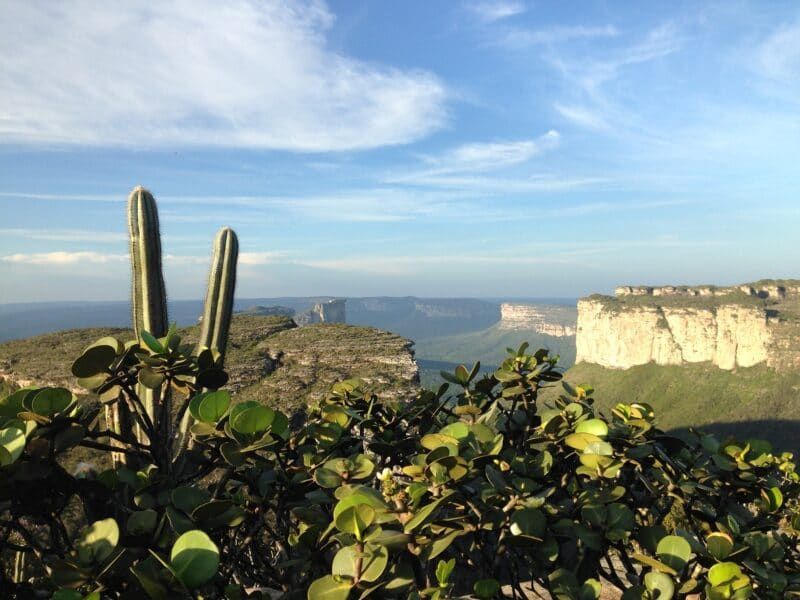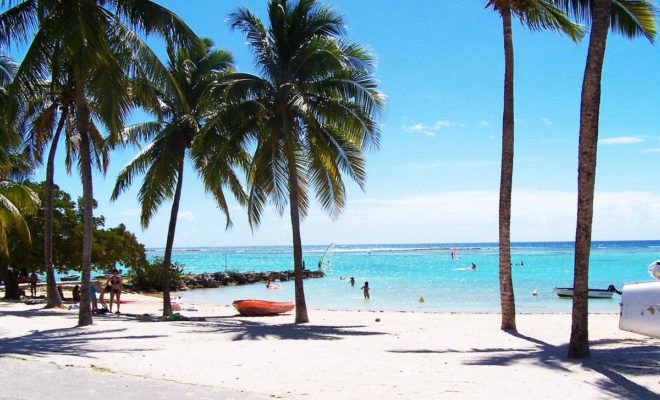Chapada Diamantina: another image of Brazil
The Chapada Diamantina: from diamond fever to eco-tourism
Like the Brazilian Pantanal, the Chapada Diamantina is an ecoregion that has the special status of a National Park. Before 1985, the Chapada region was the heart of an intense diamond exploitation. The discovery of precious stones and gold in the subsoil and rocks of the rivers had transformed the peaceful corners of greenery into a Brazilian El Dorado.
It is this diamond rush that gave its name to the region: Chapada “Diamantina”. But since 1996, mining is prohibited, in favor of the development of agriculture and especially tourism !
Because the Chapada Diamantina is a jewel of the Bahia region. The region is full of waterfalls, caves, and valleys creating atypical and unexpected landscapes ! You should definitely plan to spend between 3 and 5 days there if you stay in Salvador de Bahia. The diamond exploitation having been abandoned, the Brazilians returned to nature and what it offers, quite simply. There is a real will of preservation, which exceeds the simple marketing. The guides are all very vigilant to keep the nature clean and healthy, the tourism agencies also advocate responsible tourism.
As an example, some hikes, some sites, are limited in daily capacity, in order to secure the routes on the one hand, but also not to overexploit the sites.
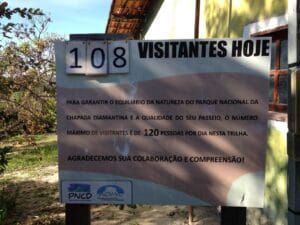
What are the places not to be missed, the must-sees of the Chapada ? It is with great pleasure that I share with you these few days of touring the Chapada Diamantina: Cachoeira Ribeirão do Meio, Rio Mucugezinho, Poço do Diabo, Gruta da Lapa Doce, Gruta da Pratinha, Gruta Azul, Morro do Pai Inácio, Cachoeira da Fumaça, Riachinho, Poço Encantado, Poço Azul e Prainha. As many sites as different memories, from the 390 meters waterfall to the 70 meters deep cave, which are really worth the trip from Salvador !
Chapada Diamantina: should you travel with or without a guide ?
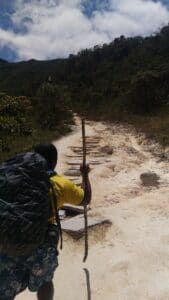 Our guide “Dodo” opens the way
Our guide “Dodo” opens the way
First of all, you have to know that Brazilians don’t understand that a group goes on an expedition without a guide. The DIY (Do It Yourself), it is not at all in the culture of the trip. Moreover, the national park is organized in such a way as to welcome a lot of tourists through travel agencies or local guides.
But it seems quite possible to go on an adventure in the Chapada Diamantina, without a guide. It remains nevertheless reserved to the confirmed hikers, able to leave with 20 kilos of material, water and food. It is also necessary to have the most reliable map possible and all the elements to ensure the safety of the group. I had found several feedbacks from travelers who have done this type of trip.
However, you should know that you will see fewer tourist sites or points of interest if you go on foot. It’s another style of adventure !
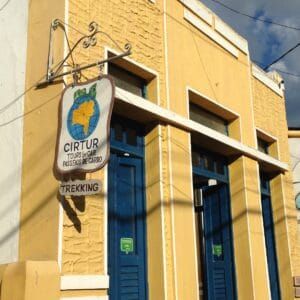
For other travelers and tourists, the best compromise is to find a travel agency or a guide (via the guides association) that will take you to all the most important places of the Chapada Diamantina. I traveled with CIRTUR agency, based in Lençois. In a very classic way, the agency proposes circuits (or “routes”) to be crossed in one day. Above all, they have a guide who speaks perfect English, Portuguese and even some French ! At the departure of Lençois, the guides come to pick you up at the hotel and the group (between 4 and 10 persons) goes by minibus to the points of interest.
Because the different sites are sometimes very distant from each other. The Chapada is a very large area !
The two guides of CIRTUR – Josemar and “Dodo” – were adorable, funny and spontaneous. They clearly participated to make me spend an excellent stay !
The incredible landscapes of the Chapada Diamantina
Three days are not enough to discover all the mysteries of the Chapada. However, it is enough to have a good overview of it ! The three days were very busy, with sometimes up to two hours of approach by minibus. The order of the visits was just perfect: a soft start with some caves, and a great end with a splendid sunset on the Chapada… Here are some pictures and explanations !
Day 1: Poço Encantado e Poço Azul
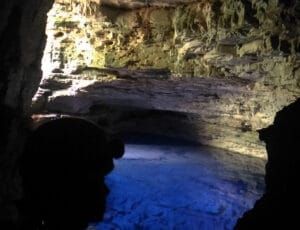
The Poço Encantado, without filters !
It is necessary to count 150 kilometers of road, of which the half of tracks, to go on these two sites relatively close one of the other. This first day is dedicated to the discovery of the underground world of Chapada Diamantina: the two caves are similar but the approach to visit them is very different ! The Poço Encantado is a very big and wide cave accessible by a small path downhill. Equipped with a helmet and a headlamp (especially for safety), we enter through a cavity that is not the main entrance of light in the cave.
Once arrived at the bottom of the great hall, the natural spectacle is breathtaking: the infamous main entrance is actually a large well of light that gives a royal blue color to the lake of water shower. The pictures speak for themselves !
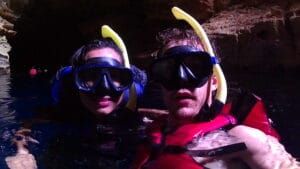
Swimming in the blue waters of the Poço Azul
The Poço Azul is also a cave, but smaller and enclosed, in which the visitor is invited to bathe ! Yes, swimming in crystal clear water, of an impressive blue, is an exhilarating experience. Before jumping into the water (which is not cold at all), it is necessary to pass by the shower and to take its precautions ! Moreover, it is forbidden to apply sunscreen and mosquito repellent, in order to preserve the nature and the clear water. Some pictures below:
Day 2: Cachoeira da Fumaça, Riachinho and Vale do Capão
Major point of interest of the Chapada Diamantina, to see the Cachoeira da Fumaça (Smoke Waterfall) is worth it ! After a 5 to 7 kilometer hike that starts with a steep climb, the visitor arrives at the edge of a cliff, the starting point of the waterfall. It’s a very different point of view to see a waterfall from the top, and not from the bottom. All the visitors are invited to lie down at the edge of the virtuous cliff and to bend their head in the void.
About 400 meters of void are revealed with a view on the waterfall ! It is very impressive ! The waterfall is called “Smoke Waterfall” because there is so much wind that the water doesn’t completely touch the lake at the bottom, it gives an impression of water vapor that escapes to the side of the waterfall ! Unfortunately, in October 2016, there was very little water and only a very small thread of water was flowing, greatly limiting the interest of the site. But the approach walk is superb, revealing a beautiful view on the Vale do Capão and large virgin spaces.
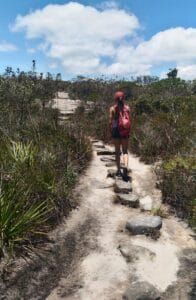
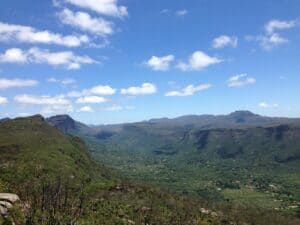
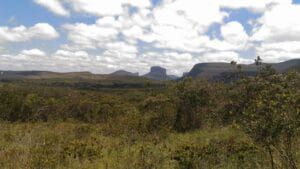
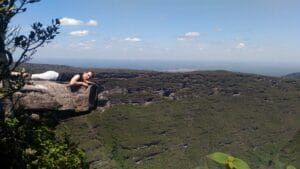
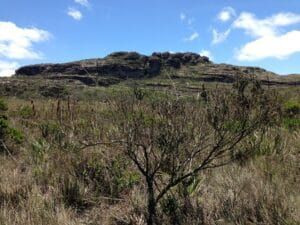
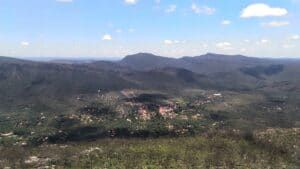
On the way back, we stop a few minutes at the Riachinho, another waterfall that offers a kind of original hydromassage, and especially a little rest for the legs after 14 kilometers of walking !
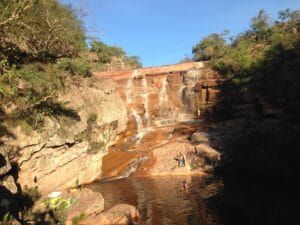
Day 3: Rio Mucugezinho, Poço do Diabo, Gruta da Lapa Doce, Gruta Azul and Morro do Pai Inácio
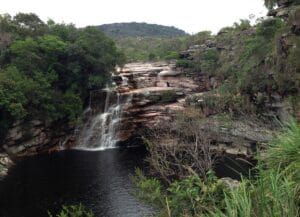
The last day is very busy and divided into three parts. We start with the descent on foot on some kilometers of the river “Rio Mucugezinho”, which gives on the “Poço do Diabo”. It’s a nice little walk near the river, allowing to appreciate the red and black colors of the waters of the region. The walk ends on the “Poço do Diabo”, a water reservoir fed by the river, transformed into a waterfall.
This kind of lake has generated many stories, even local legends. Indeed, some say that the density of the water is different at this end of the river, and that if you jump into the lake, you don’t come back up until the next day. Nothing less ! The guides invite us to swim near the edges, believing more or less in the stories and fantasies…
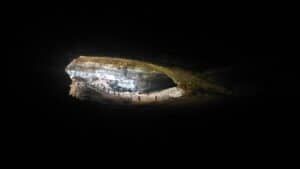
After this swim, we go to the biggest cave we visited during our stay: the Gruta da Lapa Doce. It is an old underground river of impressive proportions ! With its 30 meters high and its kilometer long, the cave reveals numerous concretions of stalagmites and stalactites, and the guides don’t lack imagination to find fantastic animals 🙂 The highlight of the visit is a complete immersion in the dark: all visitors are invited to turn off their lamp for a total absence of light.
The day ends in apotheosis with the ascent of the mount “Morro do Pai Inácio”. The ultimate symbol of the Chapada Diamantina, this hill is one of the postcards of the region ! A small climb of 30 minutes offers a large plateau populated with small shrubs and many cactus. A little bit like the Cachoeira da Fumaça, we are taken in picture on the cliff side.
To go up on the Morro do Pai Inácio at the end of the day is to enjoy an exceptional sunset ! Beautiful images in mind to leave the Chapada Diamantina… and certainly one of the most beautiful landscapes of trips that we could see.
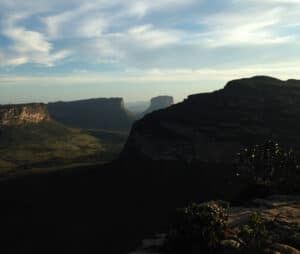
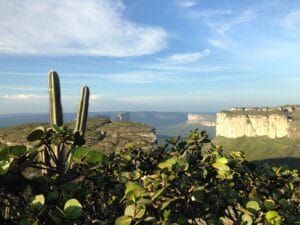
Bonus: Ribeirão do Meio
If you arrive early in Lençois on the first day, or if you come back early from an expedition day, go for a walk to the Cachoeira Ribeirão do Meio, about 5 kilometers from Lençois. You don’t need a guide at all to go there. On the other hand, ask the inhabitants of Lençois to guide you because the approach to the trail is not signposted through the city ! And this city can quickly turn into a maze 🙂 don’t trust Google Maps ! This river is typical of the waterways of the Chapada Diamantina, with its Coca-Cola colors.
The most adventurous will climb on the waterfall at 45° for a great slide.
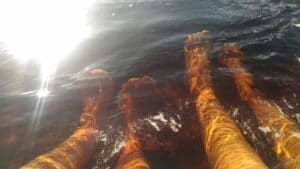
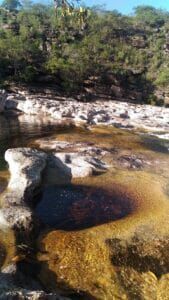
Lençois, a touristic summary
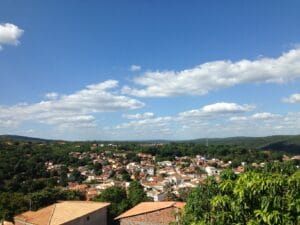
Located at 6 or 7 hours by bus from Salvador (with Viação Rápido Federal), the city of Lençois is the departure of most of the hikes and nature activities to discover the region. A small picturesque town, Lençois (pronounced “Laine-So-Isse”) offers a large number of hotels and pousadas and a large number of restaurants. We stayed in a youth hostel that offered private rooms with personal bathroom. Hostel das Estrelas is an excellent choice in Lençois. The two hosts are charming and have understood the meaning of service.
The breakfast is the best we had during our 4 weeks stay in Brazil ! Everything is homemade, fresh daily. Impressive !
At night, in Lençois, go out in the two main streets. Life is concentrated around two small cobbled streets where almost all the bars and restaurants are located. How to make a choice ? Once again, I advise you to turn to the wise advice of locals.
CIRTUR’s guides have recommended several restaurants that are open and run by historical residents of Lençois or the Chapada. Because many establishments and even travel agencies came from elsewhere, to meet the needs of tourists. The choice is yours ! Among the good restaurants, the Quilombola offers a good overview of the local cuisine 😉
